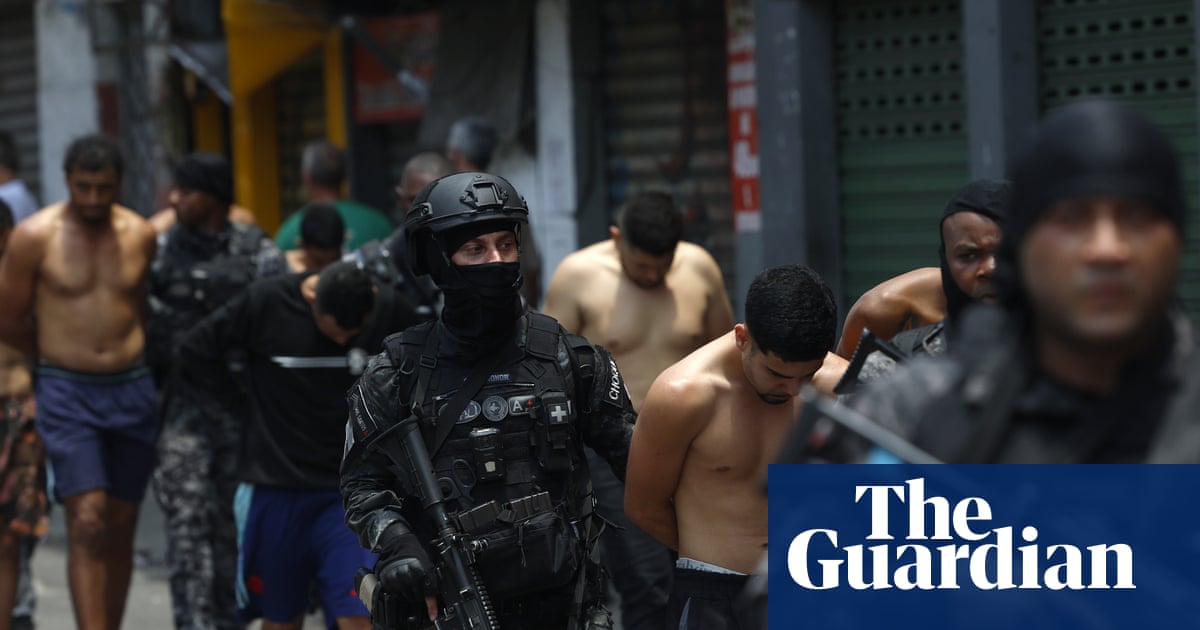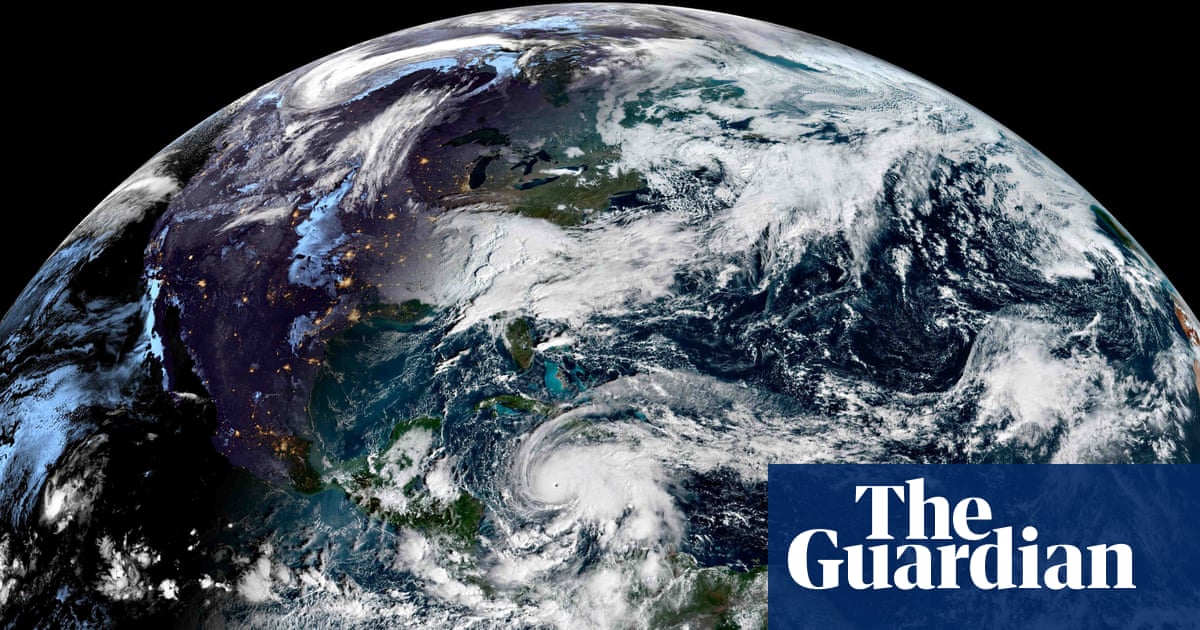John Tonai was enraged when he learned that a human-made island in San Pedro Bay was being used as a staging ground for the workplace raids unfolding across Los Angeles.
To Tonai, Terminal Island isn’t just one of the country’s busiest container ports. It’s the site of a small fishing village where his parents and thousands of other Japanese immigrants helped establish California’s tuna-canning industry.
His ancestors were also among the first Japanese Americans to be rounded up and forced into concentration camps during the second world war – a dark chapter in American history that Tonai said echoes the current deportation campaign.
At a recent press conference on Terminal Island, standing beside a memorial dedicated to the Japanese fishers, Tonai invoked his family’s story to defend the undocumented immigrant workers under attack today.
“I wanted to channel Dad because that was his home, that was where he was born,” he said. “He would have been furious if he were still here.”
Over the past two weeks, local activist groups said they’ve observed Immigration and Customs Enforcement (Ice) vehicles entering and exiting Terminal Island, using a federal prison and coast guard facility to prepare for ongoing actions around Los Angeles county. To some Japanese American organizers protesting against the raids, Ice presence on the island dredges up painful memories, as well as a sense that past injustices are repeating themselves.
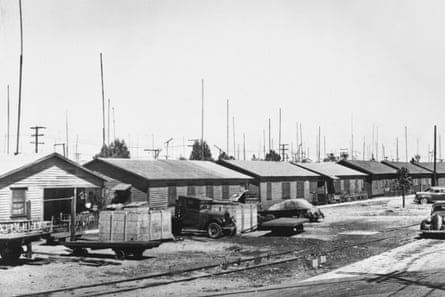
“There’s a particular nerve for me that’s struck in them using Terminal Island in this way,” said Maya Suzuki Daniels, a San Pedro high school teacher whose parents were incarcerated at a camp in Arizona. “At some point, I’d like our country to be known for something other than mass incarceration.”
Suzuki Daniels, who volunteers with Harbor Area Peace Patrols, which monitors Ice activity in the South Bay area, said the group has tracked Ice vehicles leaving Terminal Island at the crack of dawn to those executing raids around LA throughout the day.
“Every single day, we have people who see Ice vehicles, Ice agents doing their staging meetings and briefings before they go out,” she said.
Ice agents have detained nearly 2,800 people in LA since the raids began 6 June, according to homeland security figures released Tuesday. As arrests mounted, community groups have continued pushing local officials to banish Ice from Terminal Island, hosting a vigil and a 4 July gathering to increase pressure.
Ice did not respond to a request for comment. The Los Angeles port police department said it had denied a request from the Department of Homeland Security to use port property. The department also confirmed that it had no involvement with Ice on immigration matters.
For much of the 20th century, Terminal Island boasted a diverse working-class community of immigrants from Italy, Yugoslavia and, most of all, Japan.
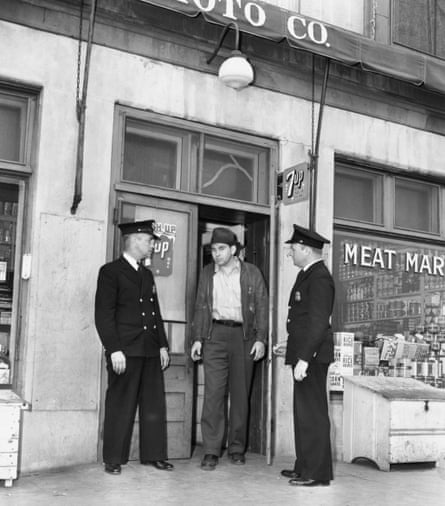
From the early 1900s to 1942, immigrants from Japan’s Wakayama prefecture transformed Terminal Island into a vibrant, tight-knit fishing village, said Naomi Hirahara, a local historian and co-author of Terminal Island: Lost Communities on America’s Edge.
At the start of the second world war, more than 3,000 Japanese residents were living in what was known as Fish Harbor. The men fished for tuna with long bamboo poles while the women worked in the canneries. Families prayed together at the Shinto shrine or the Buddhist temples; they attended dances and concerts at Fishermen Hall. Second-generation Japanese Americans, the nisei, competed in judo and baseball.
“There was a vital community and evidence for that is that, 80 years later, the descendants still come together,” Hirahara said.
Everything changed when Japan bombed Pearl Harbor on 7 December 1941. The FBI swiftly arrested Japanese leaders and fishers, ransacking their homes for contraband to confirm unfounded suspicions that they were spies for the Japanese military. The men were sent to a federal prison and didn’t see or contact their families for months.
The next February, under executive order 9066, the remaining Terminal Island residents were ordered to evacuate the island in 48 hours and, subsequently, forced into concentration camps. When they returned four years later, almost the entire enclave had been razed for military use. Many families resettled in Long Beach and the South Bay; former fishers became gardeners and produce farmers.
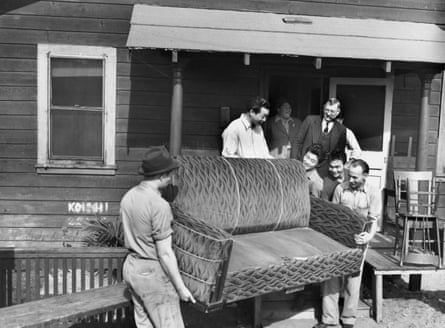
All that remains from the once-thriving fishing community are a pair of vacant buildings now at risk of demolition.
Hirahara said economic discrimination against Japanese people had been brewing long before Pearl Harbor. Since the 1920s, she said, local officials had been targeting Japanese fishers by denying them commercial fishing licenses while affording the privilege to Yugoslavian and Italian immigrants.
For Hirahara, the wartime incarceration of Japanese Americans and the current immigration crisis differs in at least one major way. While the detention of Japanese fishers was very calculated, she said, the worksite raids seemed more arbitrary, as if anyone of any racial background could be picked up.
But much like enforcement operations against undocumented immigrants today, Hirahara said, the government first targeted Japanese men while leaving behind their wives and children who had no way of providing for themselves.
“These are working people who are being rounded up,” she said. “They’re breadwinners who might be supporting their whole families.”

 3 months ago
49
3 months ago
49














